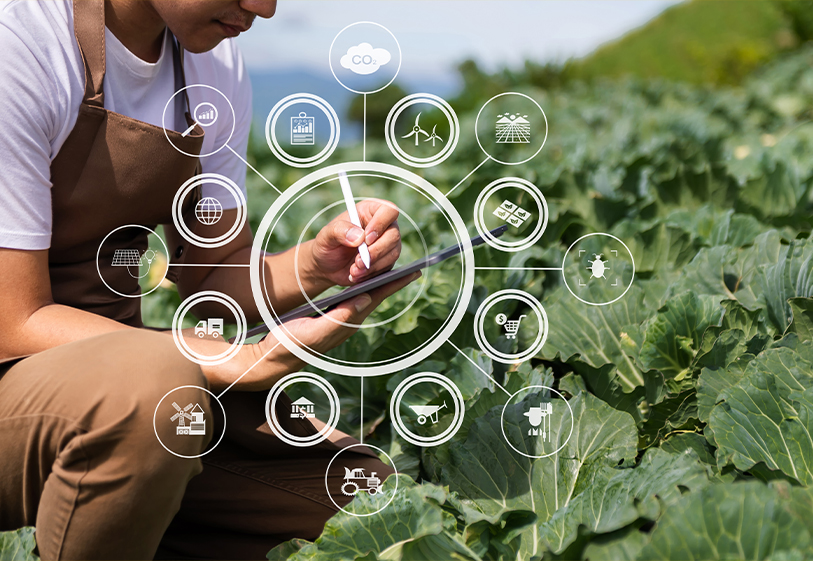
Importance of Technology To Agriculture
Technology played a major role in harvesting and farming. with the advent of digital technology, the scope of technology use in agriculture has expanded. Innovation in agriculture leads to evolution in farming practices, thereby reducing losses and increasing efficiency. The use of digital and analytical tools has made continuous progress in agriculture, and this trend agriculture continues, leading to improved crop yields and helping to increase the income of the farming community.
Technology in agriculture affects many different parts of agriculture such as fertilizers, seed technology, pesticides, etc. Biotechnology and genetic engineering have led to the creation of resistance to pests and increased crop yields. Mechanization has led to planting, harvesting, and reducing manual labor. Irrigation methods and transportation systems have improved, processing machinery has reduced waste, etc., and these effects are visible in all regions.
Use of modern technology in agriculture
Today's farmers can take advantage of the technology in agriculture to increase their farming output. Intervention in agriculture through modern technology and mechanization can solve hunger and malnutrition as well as challenges such as poverty, water, and energy consumption, climate change, and other issues. Modern agriculture is driven by continuous advances in digital tools and data, as well as collaboration between farmers and researchers in the public and private sectors.
Improving the productivity of agricultural mechanization
In order to reduce manual work and speed the processes up, the combined devices are used more. Agriculture in the country is characterized by the ownership of small plots of land, and modern machinery requires cooperation with others.
Weather forecasting through artificial intelligence
A major development in agriculture is the use of artificial intelligence (AI). Modern equipment and tools based on artificial intelligence provide the possibility of data collection and help in precise agriculture and informed decision-making. Drones, remote sensors, and satellites collect 24/7 information on weather patterns in and around fields, and vital information on temperature, rainfall, soil, moisture, and more are provided to farmers.
Development of resistant crops using biotechnology
Agriculture refers to a wide range of methods, including traditional methods of breeding, genetic engineering, and the development of microorganisms for agriculture. In general, genetic engineering uses the understanding of DNA to identify and work with genes to increase crop resistance to pests. The development of high-yielding varieties also improves livestock.
Improving farm performance and supply chain management using big data
Collecting data and further processing it for use in decision-making, and problem-solving expands the way big data works. Big data is important in smart agriculture, and its benefits extend to the entire supply chain and markets. Using technology in agriculture is becoming more widespread day by day.
This leads to the collection and use of more complex data that must be meaningfully interpreted and managed. Data can come from external sources such as social media, supplier networks, markets or sensor data, and field-based devices. Agriculture is being transformed by the use of big data, which affects crop performance, supply chain management, yield prediction, and more.
Conclusion
Agriculture is one of the most important parts of our life, and modern technology plays an irreplaceable role in increasing productivity. Technology in agriculture has the potential to really push the country towards independence in every way so that it is less dependent on external factors. Technology can help in increasing profits and reducing costs in farming.


